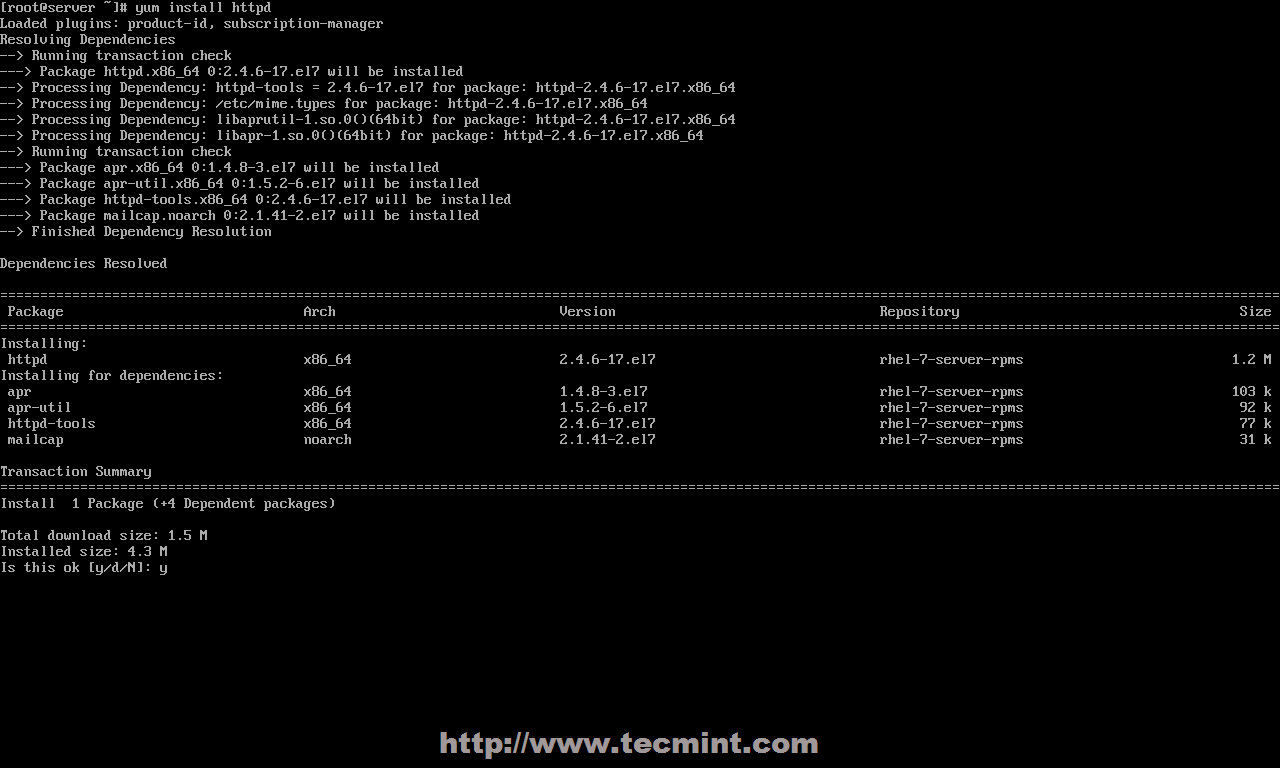Install Smokeping On Centos 7
In this how-to we are going to show you how to install and setup complete network monitoring application called Cacti using Net-SNMP tool on RHEL/CentOS/Fedora.
Has anyone successfully installed and configured SMOKEPING On CentOS 6? All the howto's I've been able to find are woefully out of date (by years) using older distros and older versions of Smokeping. I would have thought that such a useful utility would more howto's, but I guess only the uber sysadmins use it, and they don't need no stinking howto.
Remote SSH If you need to install SSH to install remotely, this can be installed via YUM: yum install openssh Then you can start the SSH server and add it to system startup systemctl enable sshd systemctl start sshd Repositories For more extended packagelist, we first install the Webtatic, OpenNMS and EPEL repositories: yum install yum install yum install Packages Now let's install the needed packages for Observium. Observium Editions Observium comes in two editions, an Open Source Community Edition released on a biannual cycle, and a Subscription Edition with additional features, rapid bug fixes and feature improvements on a daily basis and an easy to use SVN-based update mechanism. Observium Community Edition If you would like to install the Community Edition, please install using the most recent.tar.gz release. Download the latest.tar.gz of Observium and unpack: wget tar zxvf observium-community-latest.tar.gz Observium Subscription Edition If you have a valid Observium, please use one of the automated SVN release repositories. We recommend the stable train for people who intend to use automated updates to keep their Observium installation up to date.
• RRDTool: A database tool to manage and retrieve time series data like CPU load, Network Bandwidth etc. Installing Cacti Required Packages on RHEL / CentOS / Fedora First, we need to install following dependency packages one-by-one using YUM package manager tool.
To view open ports, use the following command. Firewall-cmd --list-ports We use the following to see services whose ports are open.
At the point of testing smokeping and running in debug i get following error:-./bin/smokeping –config=/opt/smokeping/etc/config –debug ERROR: /opt/smokeping/etc/config, line 10: Directory ‘/opt/smokeping/cache’ does not exist I created the folder “mkdir /opt/smokeping/cache” ran debug again and now get./bin/smokeping –config=/opt/smokeping/etc/config –debug ERROR: /opt/smokeping/etc/config, line 111: File ‘/opt/smokeping/etc/smokeping_secrets.dist’ is world-readable or writable, refusing it Any help you can offer? >ERROR: /opt/smokeping/etc/config, line 10: Directory ‘/opt/smokeping/cache’ does not exist >I created the folder “mkdir /opt/smokeping/cache” The creation of the cache directory should be covered by the guide, see: # mkdir /var/www/smokeping/cache additionally you have to change the imgcache path within the config file. >ERROR: /opt/smokeping/etc/config, line 111: File ‘/opt/smokeping/etc/smokeping_secrets.dist’ is world-readable or writable, refusing it On our installation, the ACL of the /opt/smokeping/etc (and all files in this folder) look like this (user root, group root): drwxr-xr-x. 3 root root 172 Jun 21 15:42 etc, probably you have different ACL settings if the file is world-readable or writable.

Firewall-cmd --list-services We use the following to see services whose ports are open and see open ports firewall-cmd --list-all To add a service to the firewall, we use the following command, in which case the service will use any port to open in the firewall. Firewall-cmd --add-services=ntp For this service to be permanently open we use the following command.
Now let’s make sure that our webserver and the database are automatically starting up after a reboot. Use the following commands to enable these: CentOS 6: chkconfig httpd on chkconfig mysqld on CentOS 7: systemctl enable httpd.service systemctl enable mariadb.service Now that we did make sure that these services start after a reboot, let’s start them manually now in order to continue the installation.
CentOS (RHEL) 7, has changed the firewall to use firewall-cmd which has a notion of zones which is like a Windows version of Public, Home, and Private networks. You should look to figure out which one you think you should use. EL7 uses public by default so that is what my examples below use. You can check which zone you are using with firewall-cmd --list-all and change it with firewall-cmd --set-default-zone=. You will then know what zone to allow a service (or port) on: firewall-cmd --permanent --zone= --add-service=http firewall-cmd --permanent --zone= --add-port=80/tcp You can check if the port has actually be opened by running: firewall-cmd --zone= --query-port=80/tcp firewall-cmd --zone= --query-service=http According to the, When making changes to the firewall settings in Permanent mode, your selection will only take effect when you reload the firewall or the system restarts. You can reload the firewall settings with: firewall-cmd --reload.
The smokeping documentation could be written in Latin for as much help as it is. It's in the Fedora default repo's - but between no more chkconfig/service and absolutely ZERO instructions on how to make it work I was unable to get it to run after it did successfully install (along with all it's dependents). That looks great - thank you. I'll give it a try on my next Server Monitor setup. To get my current monitor setup, I had to use Ubuntu 12.04 LTS, which had smokeping in it's standard repo's, and did a default install where everything just worked (I'm not a Ubuntu fan, but after struggling with Smokeping for about a week on other distro's, I have to say I was impressed that it just worked). No matter how you get get Smokeping installed (and on what distro), Smokeping is a great Monitoring utility. It helped my local public library convince their Cable ISP that it was NOT their equipment that was causing the problem but the Cable company's equipment that was causing random circuit drop outs - which was a HUGE win for the library.
Modify it to your likings: [.] remark = Welcome to the SmokePing website of 'Example Company' [.] 3.1 Basic Example We will now do a basic configuration to measure the network latency to certain servers in various countries (e.g. Professional karaoke programs for laptops. Germany, UK, USA).